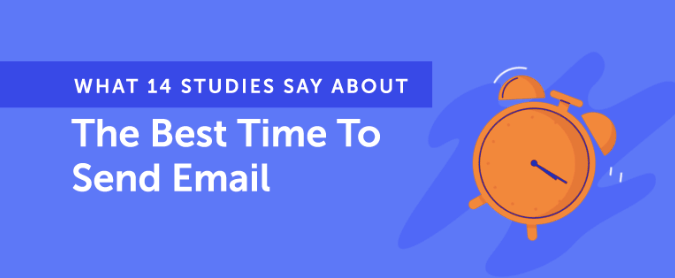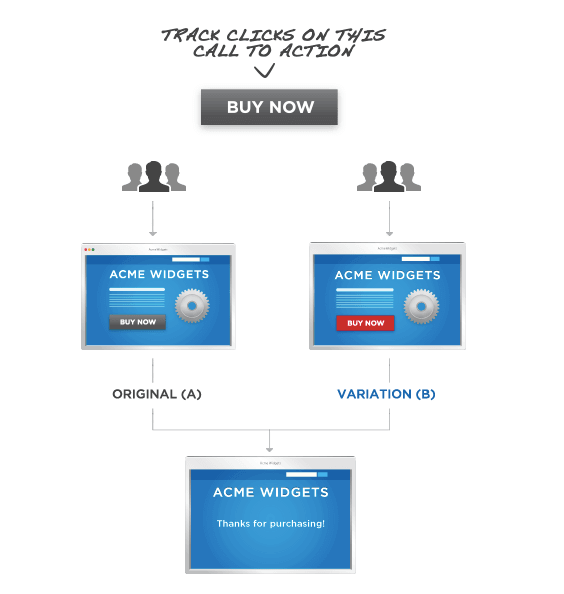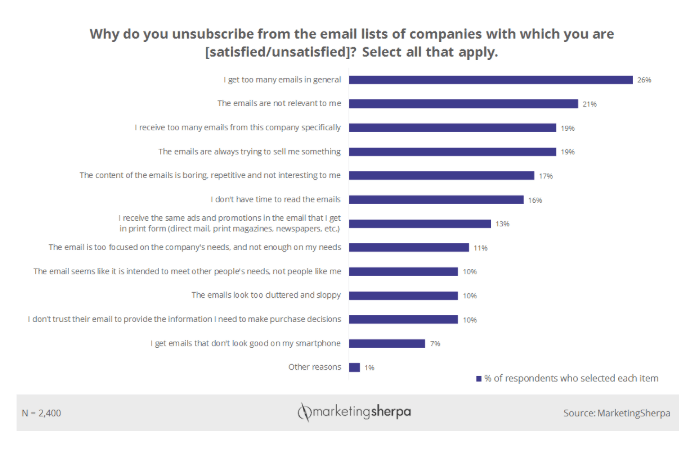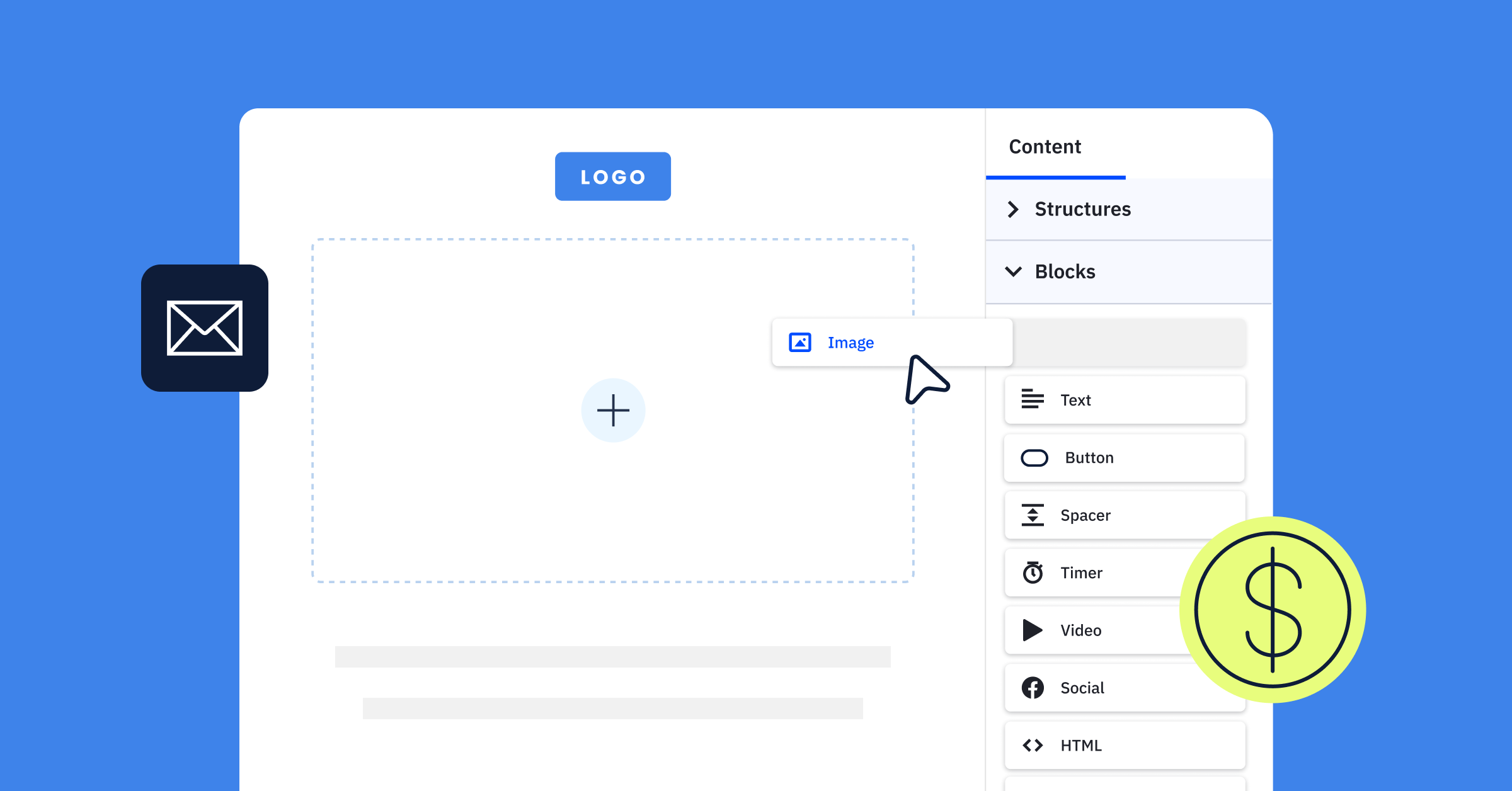“If at first you don’t succeed, Try, try, try again.” – Thomas H. Palmer
Resending email campaigns probably sounds redundant, right?
I mean, they ignored your email the first time completely or opened it and decided they didn’t care enough to click. Would trying again even work?
Well, let’s answer that with some cold, hard facts.
Forbes contributor Neal Taparia tested resending an email campaign and here’s what he found:
- They sent out a first email and a follow-up email about an information literacy report.
- 2,723 received the original email. 579 (21.3%) of them opened it and
- 224 of them clicked on the call-to-action (8.2% CTR).
- So then they resent the email, but only to people who didn’t open the first one.
- 309 of those people opened it, and 114 clicked on the call-to-action.
- Between both emails, nearly 54% more people were reached, and they got almost 52% more clicks on the follow-up than the original.
This means…resending emails can totally work.

Woohoo!
If your open rate for a re-sent email is similar to the rate for the first email, that means you’ve almost doubled your open rate, reached as many people as possible, and done it all with minimal effort.
Not too shabby.
This post will cover:
- Why you should (or shouldn’t) try resending emails to customers – is it annoying or acceptable?
- The 5 questions you must ask – if you don’t want to have any regrets
- What results you can expect to see from resending emails (is it what you think it is?)
Here we go.
Should you even bother resending email campaigns?
Yes! Resending emails to non-openers is one of the fastest ways to get more out of the work you’re already doing. If only about 20% of people open your first mention (a standard email open rate), you can get way more eyes on your message by resending it.
A single email is a lot of work. There’s…
- Conceptualizing
- Copywriting
- Designing
- Coding
- Sending
- Monitoring
No doubt about it – quality emails take time.
So when you see all that labor yield a low return on investment and someone (like me) suggests trying it again, it’s easy to think, “Should you even bother?”
The answer to that question is: Yes, you should re-send emails.
Just not all of them.
Your customers get emails on top of emails all day, every day. It is really easy to lose messages in a flooded inbox.
Did you know that…
- The average worker spends 28 percent of their work week on email, which is more than 11 hours a week
- The average business is expected to send and receive 126 work emails per day (or 620 emails each week) by the end of 2019
Quick math time:
(620 weekly emails) x (52 weeks per year) = 32,240 sent and received work emails annually
Can you even picture that many emails? Imagine if those were actual mail messages…

Every single box would be bursting at the seams.
Resending every one of your email campaigns is not necessary. But resending just one or two might be enough to get more eyes on your emails.
Why you should resend emails
Resending email campaigns gives you a second chance to engage your contacts by:
- Give unopened recipients a chance to engage
- Give people who opened but didn’t click another chance to click
- Test new ways to send emails (with different copy, images, etc.) to see which version works best (in case you want to reuse it in a later email funnel)
And yes, breathing new life into an email campaign can potentially do great things for your email open and click-through rates — but ultimately there needs to be a bigger goal behind a second try.
What’s an open or a click worth if it doesn’t lead to a sale, subscription, or some other solid connection with customers?
Bottom line: A better open rate and more clicks are great, but email should be about solid engagement that leads to conversions—not just open rates.
Think about the long-term value you are looking to give a customer and the kind of connection you want to build with them, not just the one-time open or click value you want for yourself.
That value might be resending emails that offer things like:
- A free content download for being a regular customer
- Product suggestions with a special discount code so they can get more of the value they love
- A note that appreciates them as a customer (it doesn’t always have to be about things)
Customers are going to remember the brands who sent emails that gave them long-term value.
Why you shouldn’t resend emails
The worst reasons to resend an email campaign are:
- Because statistics and research are telling you the best ways to
- Because you’re only trying to boost that conversion rate
Don’t get me wrong – learning from other people’s experiences (both successful and not) is completely legitimate. But where people run into trouble is internalizing those experiences and expecting their attempts and subsequent results to mirror them.
Neal Taparia was able to show that resending email campaigns can be successful. But remember – it was a success for them.
There’s a lot of research that talks about the best days and times to send emails—but all of that research has a fatal flaw (and we’ll get to that in a moment).
Take a look at this headline for research about the best sending days and times.

(Source: Coschedule)
What you need to pay attention to in this headline is the phrase “what 14 studies say.”
What does that really mean? “14 different studies” are giving average data on best sending times simply because they can’t agree?
No.
There’s no definitive answer because there can’t be. Data like this will be different for everyone. That’s why averages exist.

So…Wednesday ISN’T foolproof?
Why doesn’t average data just work if experts are saying it? Here’s a common average story that explains why.
A man drowned crossing a river that was said to be on average 3 feet deep.
More specifically the river was 6 inches deep near the outside and 8 feet deep in the middle. This meant that an average of 3 feet, which would be easy to cross through safely, meant nothing because those 8 feet still existed.
8 feet is still 8 feet, so even though the average depth between 6 inches and 8 feet was a walkable 3 feet, it wasn’t enough data to rely on to be successful.

What do you think? Does that look like 3 feet to you?
It isn’t that those 14 studies don’t reach the same conclusions. It’s that the data that came from all of them is based on average best send times, and there are a lot of problems with using average numbers to make decisions.
I mean, clearly. The man in that story drowned.
It’s good to look at what people have done, but it’s more important to look at what you’ve already done and figure out what else you can do.
Don’t expect the same results as everyone who’s had success sending an email at 10 a.m. on Tuesdays. Your data will be different.
Remember this when you resend any email.
First, optimize for content, then tweak send times.
Email marketing research about email sending best times and days only goes so far. There may be some trends on average, but there’s so much variability that the average is probably not useful.
Optimizing send time for your own list might make more sense, but nailing the content and subject line of an email has a higher impact.
You’ve decided to resend the email. What do you need to do next?
Ask yourself the following 5 questions about the emails you’re planning to resend:
- What (if anything) should you change?
- Who should (and shouldn’t) receive the resent email?
- Should you resend all your email campaigns?
- How long should I wait to resend an email?
- What should I do if resending an email works or doesn’t work?
1. What (if anything) should you change?
When you resend an email to non-openers, change the email subject name and from name. If you resend an email to people who opened it but didn’t click, you could consider changing your call to action or email buttons.
You’re resending an email, so does that mean you:
1. Resend the exact same email as before?
Or…
2. Send a slightly tweaked version of the original email?
I’ll give you a hint – it’s not option #1.
You can’t know for sure why people either didn’t open or didn’t click through the first email you sent them, but it could have been something as simple as an unappealing subject line or a call to action.
Small incremental changes can drive a big impact. That’s where A/B testing comes in.

A/B testing compares two versions of the same email to find out what elements have great impact. Here, the CTA button has been made more visually prominent. (Source: Optimizely)
You can try testing changes with things like:
- Subject lines
- “From” name
- Body copy
- Call-to-action buttons
- Images
- Layout
- Send time windows
Although A/B testing results shouldn’t be taken as gospel, they can give you an idea of what customers respond to. Combined with your own intuition, testing data can lead to good decisions that get more people to do what you want them to do.
So, how much should you test? One variable? Three? Five?
For A/B testing, I would just start with changing one variable of your email.
Here’s why:
Science historically tells us that most scientists recommend only changing one variable to test the effect on the relationship between the elements of an experiment. It’s a more accurate way to tell whether the thing you change actually has an effect.
Quick example:
Noah Kagan coined the term double-opens, which means waiting one week to re-send an email to subscribers who didn’t open the first one.
When testing this, the only thing Noah changed in this second email is the subject line.
Guess what he saw?
An 11% bump in his open rates for a total of 30%+. In his case, that meant 7,028 more opened emails from 1 minute of work changing the subject line.
Original:

Double-open email:

Just one variable change did that. Science for the win.
A good place to start A/B testing is the subject line.
Here’s an example of two emails I got from Fabletics about the same new SculptKnit legging, with a few minor changes between the two subject lines:

For your convenience, that upside-down one reads “Flip your perspective on sculptknit.” Clever, right?
That upside-down subject line definitely got my attention, and I did actually open that email, but I didn’t click on anything in it. But the next time they emailed me (approximately a week later), they updated the subject line to do two things:
- Continue getting the word out about their new leggings
- Incentivize me to click through the email and take advantage of their offer (before it was too late)
And now I’m the comfortable owner of some new leggings.
A small change made the biggest difference, but resending the exact same email twice would have been a cause for a delete or spam action.
If a customer saw your first email and purposefully didn’t open it or even deleted it, they likely won’t react well to seeing the exact same subject line appear in their inbox again.
Would you? I doubt it. So it’s better to refresh it for round two.
2. Who should (and shouldn’t) receive the resent email?
Here are the people you could consider resending an email to:
- Non-openers
- Non-clickers
- Mobile users who didn’t open or click
Here’s who shouldn’t get a repeat email:
- Your whole original email list
In the same way that you should target content to specific audiences, you’ll see better results when you are more selective with whom you resend an email. That means only resending to one audience at a time, like:
- People who opened but didn’t click
- Those who clicked but didn’t convert
You can A/B test different re-sent emails to different audiences but don’t mass send.
Mass sending a repeat email to your whole list (even an updated email) is not recommended. People who actually opened and clicked will mark you as spam if they get a bunch of repeat emails.
3. Should you resend all your email campaigns?
No. You don’t need to resend every campaign as a regular practice. This is bad resending email etiquette.
Don’t resend every single campaign.
Resending email campaigns regularly could severely dilute your efforts to increase engagement. If people start noticing that you are a much bigger (and repetitive) presence in their inbox than ever before, that’s a pattern they will be quick to put a stop to.

Enough with the repeats.
Consider the value to your customers before resending and ask yourself, “Is this more for you or for them?”
What is this new attempt going to give them that the first one didn’t? If you can’t come up with a good answer to that, it may not be worth your time (or theirs) to resend that email.
But you can create new value in an email you’re planning to resend. You can use a content upgrade (like a free download or other lead magnets) to make opens and clicks more enticing.
Along those lines, note that campaigns you are trying again should only be re-sent once.
Customers will absolutely get annoyed if they start getting multiples of everything from you (especially if they’ve already engaged with the first one).
So be aware before you hit send on that follow-up email because a customer could follow up with an unsubscribe message instead.
4. How long should I wait to resend an email?
Wait 2-4 days before resending an email. You can wait up to one week before resending an email if it makes sense for your message. Some evergreen emails can be reused in campaigns throughout the entire year if you know that they perform well.
It’s a balance.
The longer you wait, the less likely you’ll come off as clingy and desperate and, dare I say spammy. Too long, and your new message might be brushed off and forgotten or missed.
Your decision of how long to wait before resending an email will depend on two things:
- How many other emails they are already getting from you
- How long you have waited between different campaigns in the past
Did you know that the top reason for people unsubscribing from email lists is getting too many emails?
26% cite this reason. Clinginess doesn’t pay off. (Source: MarketingSherpa)
If you want a way to make a more informed decision about what works best for your business, look at the results from your past campaigns. Look at successes and failures, and note how much time passed between emails.
Looking at your own data will help you know what the best time frame is for your business.
5. What should I do if resending an email works or doesn’t work?
If resending an email doesn’t work, you can do one of two things:
- Send them your next new campaign and see how they respond to that one.
- Clean your list of unengaged customers and focus on the ones who responded to the first or second email.
But what if it does work?
It’s time to continue their customer journey! And that means looking at what other content they want.
If clicking through your re-sent email led to a purchase, you can try sending them related product suggestion emails. And when you are sending these kinds of emails, you can automate them.
In a marketing automation platform (like ActiveCampaign), you can not only automatically resend the email when it’s time but also create guidelines for what-if scenarios after its release.
What does this mean? Let me explain.
You send them the initial email via automation, and they open it but don’t click.
All the work is easily done for you.
You wait 2 days and then send them the email again. Then, depending on what they do, you can do things like:
- Add them to another automation
- Send new emails
- Unsubscribe them from a list
There’s an action for every possible scenario, and they can all be automated.
Sent! And now, you wait. What results can you expect?
What can you expect? Truthfully, you can’t have any concrete expectations.
Hypotheses? Absolutely.
Hopes? Dreams? Educated guesses? You can have these too. But ultimately your re-sent email results will not be the same as someone else’s. So, what results can you expect?
I don’t know.
But here’s what you can still keep an eye on and measure for some clarity:
- Click-through rate
- Open rate
- Deliverability
- ROI
- Number of new subscribers versus unsubscribers
- Web traffic trends from emails or link clicks
After looking at the data, the most important thing you can do after resending an email is to evaluate the big picture.
Ask yourself:
- What did this accomplish?
- What didn’t it accomplish?
- Was the amount of time and resources spent to do this worth it?
- What should I consider next time that I didn’t this time?
No matter what your results are, there is always an opportunity to learn. Happy re-emailing!




